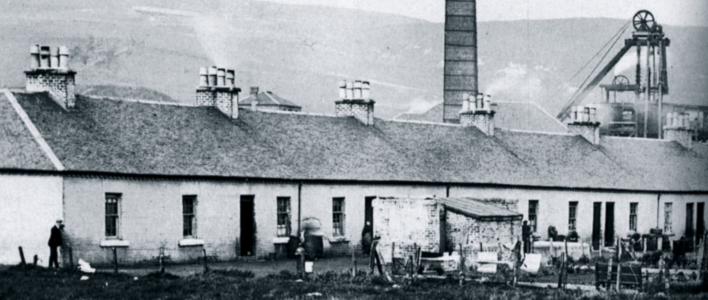Burnfoothill and Lethanhill – ‘The ‘Hill’
On the hill above Dalmellington, the twin mining villages of Burnfoothill and Lethanhill were established on the Knockkippen Plateau, with only 250 yards separating the villages. Known collectively by locals as ‘The ‘Hill’, they were built to house the workers in the ironstone mines by the Dalmellington Iron Company established in 1846.[1]
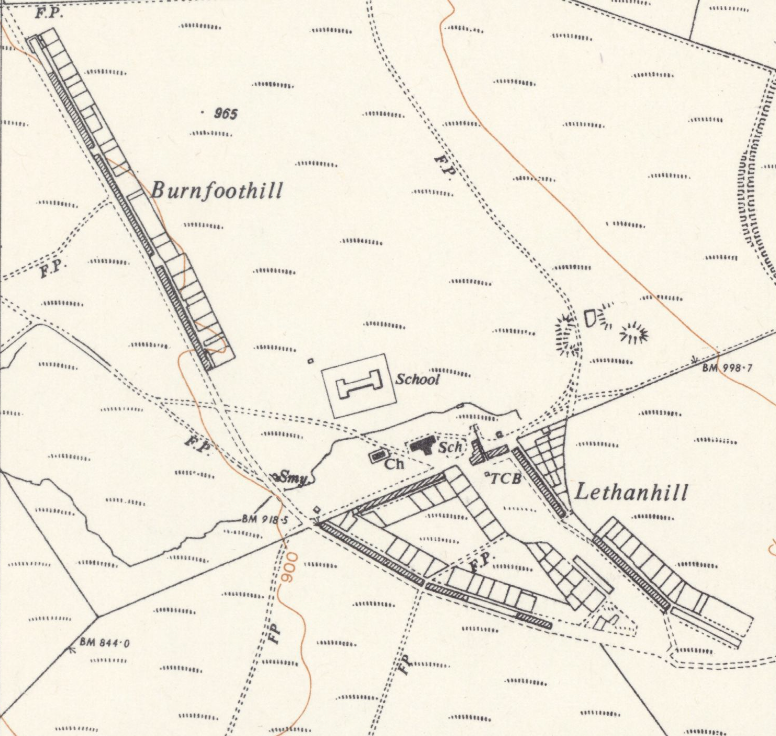
By 1851, a row of ten houses were established in Lethanhill, though recorded in the census as Burnfoothill. The first residents largely came from Lanarkshire and Ireland. By 1860, a tarmac road was installed by the company with gates to control access to all the villages on the hill, which included Benquhat (also spelled Benwhat), and Corbie Craigs. By the 1870s, a boom in mining led to the expansion of Lethanhill. By 1872, the three rows in Burnfoothill were built, known as the Polnessan Row. The ‘Hill now had around 300 houses with a population of 1,690.[2]
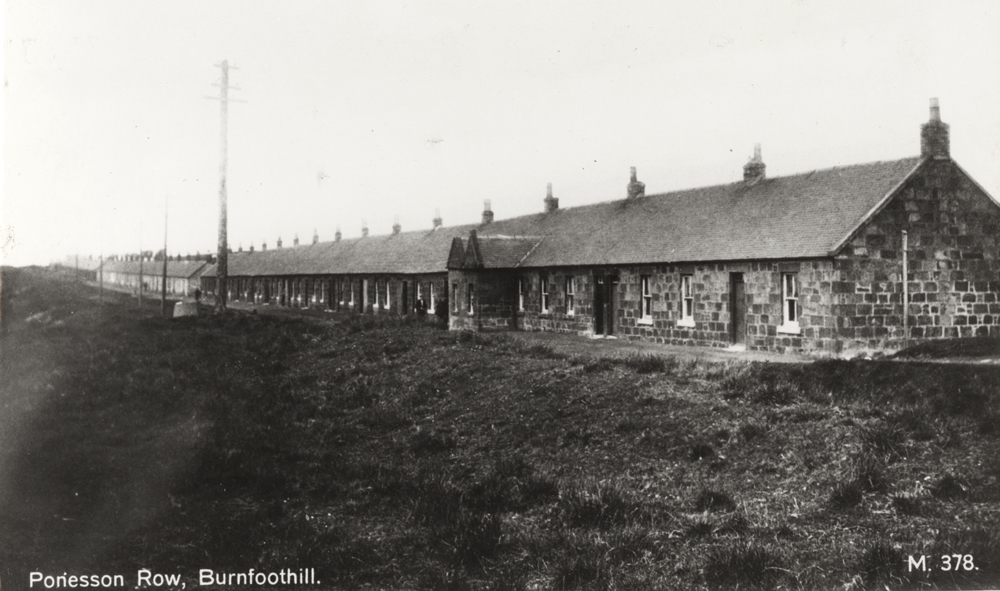
There was a railway up to the ‘Hill from the earliest days which transported the miners to the pits from the villages and coal and ironstone down to the Iron Works at Waterside.
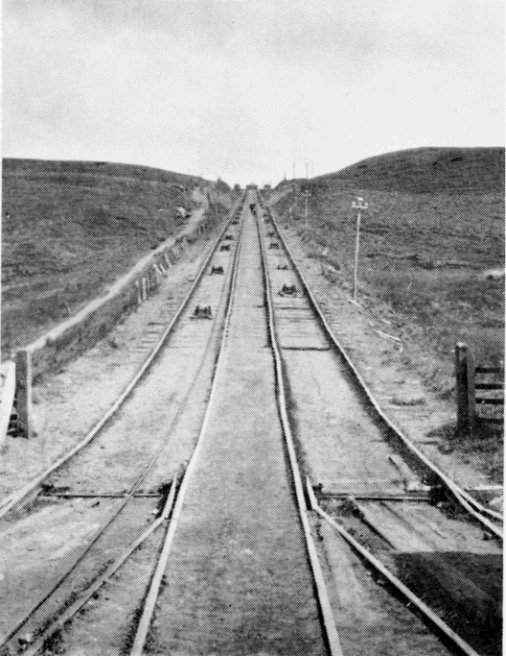
The Lethanhill inclined planes for lowering the coal and ironstone from the pits to the Dalmellington Iron Works.
The company store in Lethanhill served both villages. In later years, the store was supplied by the company van. Locally known as the ‘Lion’s Provider’, by the time the ‘Lion’ reached Lethanhill around 4.30pm a lengthy queue had formed and it could take until 7pm on weekdays to clear. [3] A Beer Store was attached to the company store; no spirits were sold. The village also had a church, built in 1903, that was sold to the Benquhat Silver Band when the village was rehoused, who rebuilt down in Patna as a rehearsal hall.[4] Two empty houses, numbers 16 & 17, in Burnfoothill were made into a single unit with an extension to the rear to be used for the Miner’s Institute.[5] In the extension there were two billiards and carpet bowls tables and a small games room for playing dominoes or skittles. There was a large reading room to the front with an ‘extensive’ library and daily newspapers. The author of a local history book, The ‘Hill and its People, Thomas McQuillan recalls spending most of spending his time between the football field in summer and the Reading room in winter.[6]
Living conditions in the rows, like others in Ayrshire villages were hard and basic. Ayrshire Miners’ Union official James Brown, as part of the union’s report to the Royal Commission on Housing in 1913, expressed his disbelief of what he found when he surveyed Burnfoothill:
Many families have absolutely no washing house, no coalhouse, no ashpit, NO CLOSET! What do the people do? That is a question which should not be asked too loudly! From time to time one hears rumours that fever is rife here. We have only these rumours to go by, but there is certainly plenty of fever breeding ground. [emphasis original] [7]
Some improvements were made to the villages in the 1920s. In 1921 work began on a public road up to the villages which was built with money raised by the local community. A new school was constructed in 1928 with separate woodwork and domestic science classrooms. Electricity was installed in the houses by 1926 supplied from the iron company station at Waterside. Andrew Sim, born in Laigh Row in Lethanhill in 1926, recalls electricity ‘cheap’ at a flat rate of 1/- a week and opened up a world of new modern conveniences for the miner’s families. However, supply was limited recalling, ‘if you had to iron by electricity you couldn’t run any other electrical gadget other than the lighting’. Here W. Stewart recalls electricity on the ‘Hill:
As time went by all the new innovations began to appear, electric irons, kettles and the master of them all, the electric oven. Every year, coming round to Christmas and the New Year all the folk with electric ovens were busy baking shortbread and currant buns, the electric irons were on full bore. Down in the Power Station the tell-tale needle was creeping up towards maximum output and all of a sudden off went the power and you were in the dark for about two hours, everything in the ovens was ruined.
(W Stewart, quoted in Andrew Sim, unpublished autobiography, donated by Ruth McFarlane)
Andrew’s father was the Postmaster in Lethanhill after the Second World War until they were rehoused in Patna in 1951. The ‘Hill villages of Burnfoothill, Lethanhill, Corbie Craigs and Benquhat were prioritised by the Ayr County Council for rehousing. The last villager to leave voluntarily was James Stevenson from 18 Burnfoothill on 31st August 1954.[8] He had been up there by himself for three months before his house down the hill in Patna was ready. Mr Rab Bryce resisted being moved out and was forcibly moved down to Patna, aged 79, according to Willie Murphie, he was the oldest and last resident of Lethanhill.[9] The secondary school at Patna struggled to cope with the new ‘Hill children and so they were bused up to the Lethanhill school until the new Patna Secondary School was completed in 1959.[10] The schoolhouse is the only building remaining at the Lethanhill site.
The Lethanhill site became a tree plantation, which today has created atmospheric ruins for local walkers.
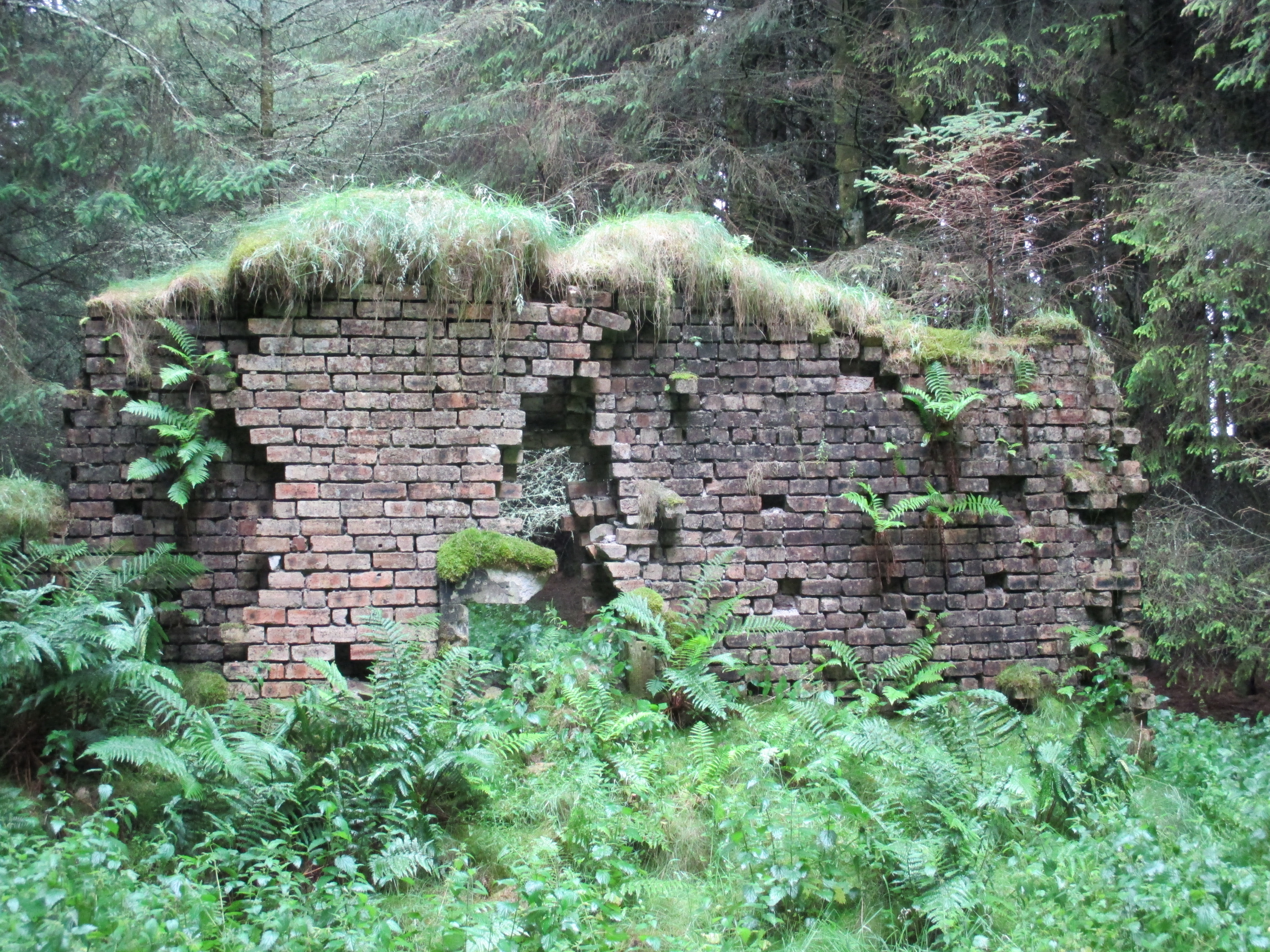
Photograph courtesy of Lyndy Renwick.
All that remains of the village intact today, is the war memorial.
Burnfoothill’s broken walls were still visible for around 50 years until the opencast mining in the area created a settling pond on the site. Here is the settling pond on what was on the site on the main pit near the villages Chalmerston North.
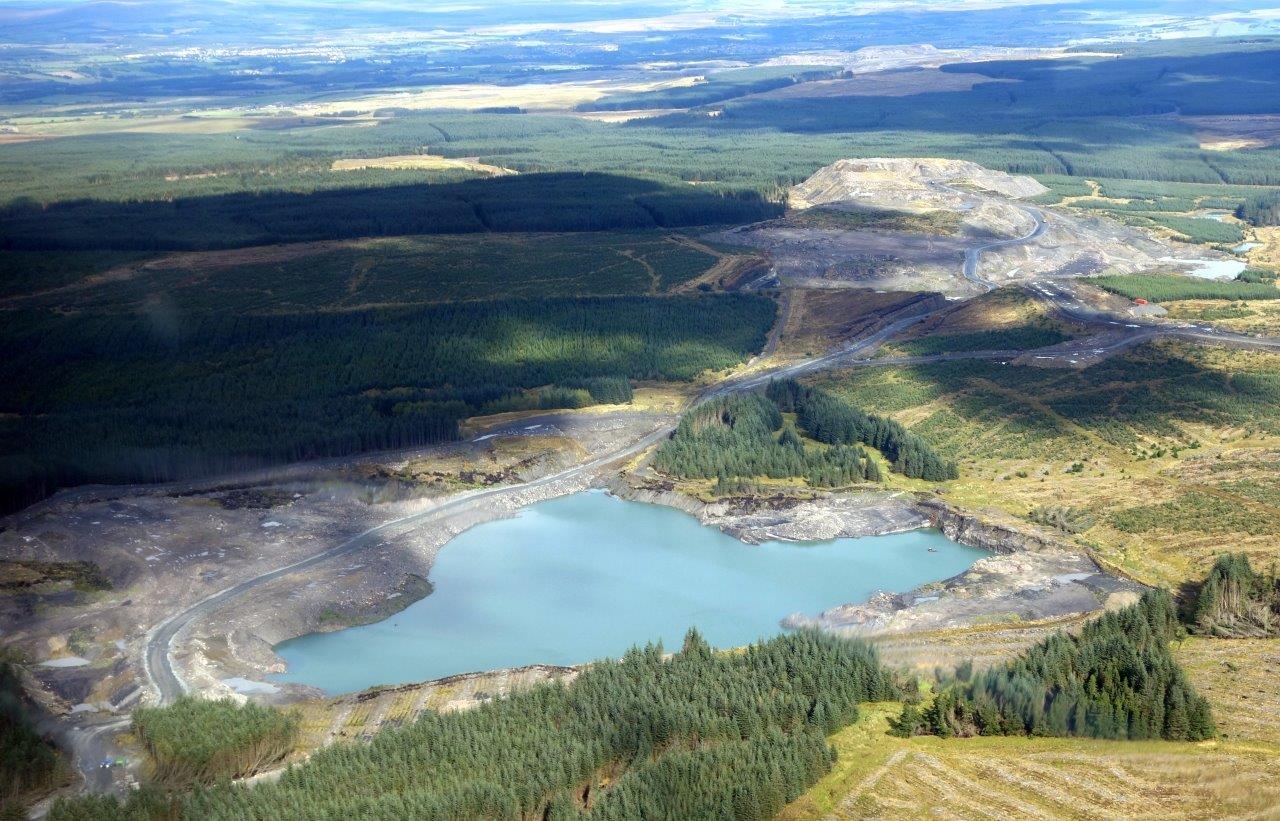
If your family came from the ‘Hill and you have some stories to share about the villages, please get in touch with our project. Currently, we have few stories about Burnfoothill, so we would like to hear more about living in the Polnessan Rows.
Further Reading:
- Dane Love, Ayrshire’s Lost Villages, (Carn: Auchinleck, 2017)
- William Murphie, ‘Lethanhill – a deserted village’, Scots Magazine, September 1966
- McQuillan, T. Courtney, The ‘Hill: Its People and its Pits – A History of the Village of Lethanhill and Burnfoothill, (Cumnock & Doony Valley Distric Council, 1988McQuillan, T. Courtney, The ‘Hill: Its People and its Pits – A History of the Village of Lethanhill and Burnfoothill, (Cumnock & Doony Valley Distric Council, 1988), pp.11-12
Footnotes
- McQuillan, T. Courtney, The ‘Hill: Its People and its Pits – A History of the Village of Lethanhill and Burnfoothill, (Cumnock & Doony Valley Distric Council, 1988), pp.11-12
- McQuillan, The ‘Hill, p. 18; 20
- McQuillan, The ‘Hill, p. 23
- Dane Love, Ayrshire’s Lost Villages, p. 207-208
- Dane Love, Ayrshire’s Lost Villages, p.66
- McQuillan, The ‘Hill, p. 4
- 1913 Miner’s Row Report, p. 52 http://www.ayrshirehistory.org.uk/Bibliography/monos/amr1.htm
- McQuillan, The ‘Hill, p. 54
- William Murphie, ‘Lethanhill – a deserted village’, Scots Magazine, September 1966, p.529
- Dane Love, Ayrshire’s Lost Villages
